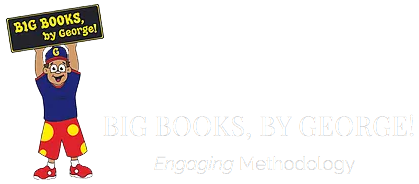Crafting Children's Picture Books: 5 Essential Writing Tips
Have you ever found yourself lost in the magical world of children’s picture books, marveling at the whimsical characters and vibrant illustrations? Perhaps you’ve even dreamt of creating your enchanting tale to share with the youngest readers. Well, you’re in luck.
In this guide, we’ll explore the art of crafting children’s picture books, breaking down the process into five key tips that will help you bring your stories to life. Whether you’re a seasoned writer or a newbie, get ready to embark on a creative journey that will not only captivate young minds but also nurture your inner child. Let’s begin, shall we?
1. Finding Your Inspiration
Creating a children’s picture book begins with a spark of inspiration. Look around you, delve into your childhood memories, or simply let your imagination run wild.
Inspiration can strike from anywhere, be it a funny conversation with a friend, a quirky pet, or even a memorable trip to the zoo. Remember, children’s books can cover a vast array of topics, from friendship and family to the importance of kindness and empathy.
If you’re an ESL (English as a Second Language) writer looking to craft ESL books for beginners, consider themes and topics that resonate with young learners. Stories about everyday activities, animals, or adventures can engage and educate young readers while helping them improve their language skills. Remember, your goal is not only to entertain but also to facilitate language development.
2. Crafting a Compelling Story
Once you’ve found your inspiration, it’s time to weave it into a captivating story. Keep in mind that children’s picture books are often short, so every word counts. Begin with a strong opening that grabs your readers’ attention, introducing your main character and setting the stage for their adventure.
As you develop your plot, remember to keep it simple and relatable for your target audience. Use short sentences and straightforward language, avoiding complex words or concepts that might confuse young readers.
Consider the pacing of your story as well. Young children have shorter attention spans, so keep the plot moving and use engaging dialogue and actions to maintain their interest. Transition words like “suddenly,” “next,” and “finally” can help guide readers through the story smoothly.
3. Creating Memorable Characters
One of the hallmarks of a great children’s picture book is the presence of memorable characters. Whether it’s a curious kitten, a brave explorer, or a friendly dragon, well-developed characters are essential to capturing young imaginations.
Give your characters distinct personalities and motivations. Think about what makes them unique and relatable to your target audience. Consider the challenges they face and how they grow or learn throughout the story. In ESL books for beginners, for example, characters can also serve as language models. So ensure their dialogue and interactions reinforce the language you want young readers to learn.
Additionally, work closely with your illustrator to ensure your characters come to life visually. The illustrations should complement the text, adding depth and emotion to the story. A successful collaboration between writer and illustrator can elevate your book to new heights.
4. The Magic of Illustrations
Children’s picture books are a marriage of words and images. The illustrations play a pivotal role in conveying the story and capturing a child’s imagination. When working with an illustrator, it’s crucial to provide clear descriptions of scenes and characters, allowing them to bring your vision to life.
Remember that young readers often rely on the pictures to understand the story, so the illustrations should align seamlessly with the text. They should enhance the narrative, emphasizing key moments and emotions. Ensure that the visuals are colorful and engaging, drawing children into the world you’ve created.
For ESL books for beginners, illustrations can also serve as visual aids to reinforce vocabulary and comprehension. Consider incorporating labels or simple captions to help young learners associate words with their corresponding images. This not only enhances language acquisition but also makes the book more accessible to early readers. For more details visit us at https://www.bbbg.org/.
5. The Power of Editing
Writing a children’s picture book is only the beginning. The editing process is where your story truly takes shape. Start by revising your manuscript for clarity and conciseness. Remove any unnecessary words or sentences that might distract from the main plot.
Consider reading your story aloud, preferably to a child or a willing adult. Pay attention to their reactions and any moments where their attention wanes. This will help you identify areas that need improvement.
Also, editing is a critical step in ensuring the language is appropriate for young learners. Check for grammar and vocabulary consistency, and be mindful of cultural references that may not resonate with your target audience. Remember, simplicity is key.
Once you’ve revised your manuscript, seek feedback from other writers, editors, or educators who specialize in children’s literature. Their insights can provide valuable perspectives and help you refine your story further.
Conclusion
Writing a children’s picture book is a joyful and rewarding endeavor that allows you to touch the hearts and minds of young readers. Whether you’re creating ESL books for beginners or timeless tales of adventure, remember these five key tips: find inspiration, craft a compelling story, create memorable characters, embrace the magic of illustrations, and embrace the power of editing.
As you embark on your journey as a children’s book writer, keep your inner child close at hand. Immerse yourself in the world of children’s literature, read widely, and never stop exploring your imagination.
With dedication and a dash of creativity, you can create stories that will leave a lasting impression on the youngest generation of readers. So, pick up your pen open your laptop, and let the storytelling adventure begin.
Learn More:
